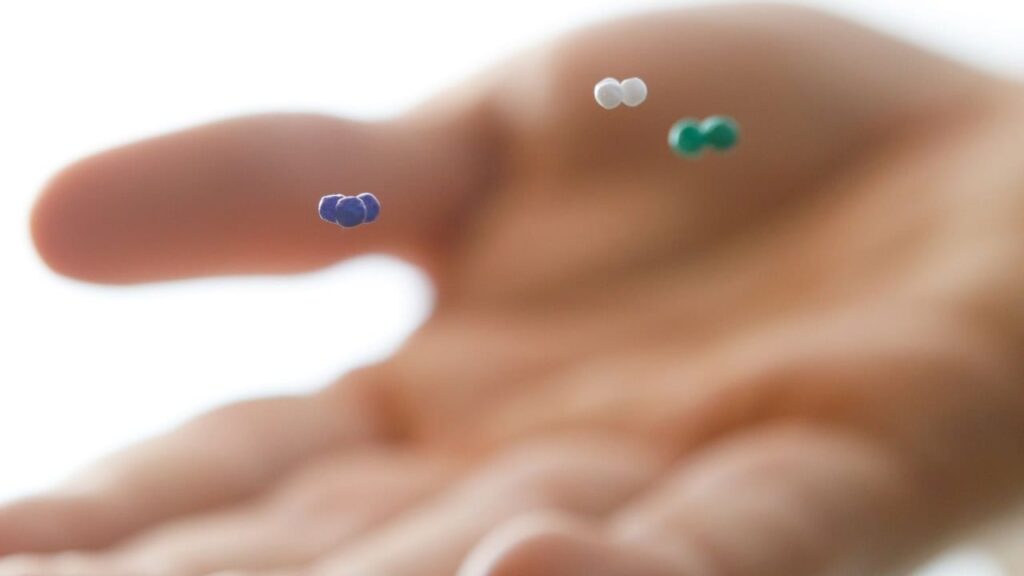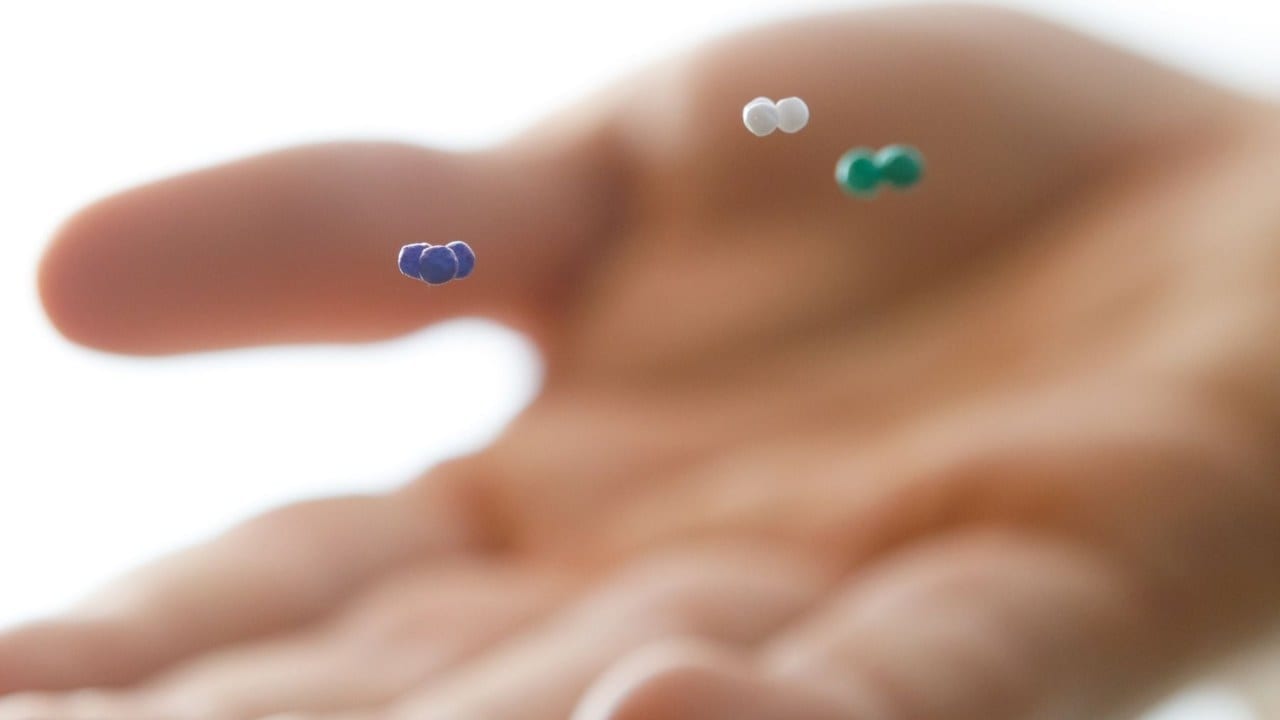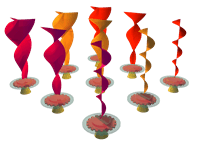
Asier Marzo has worked with the professor at the University of Bristol Bruce Drinkwater on this technology that could be used for surgical operations without incisions
Asier Marzo-Pérez, researcher at the Public University of Navarre (NUP/UPNA), and Bruce Drinkwater, lecturer at the University of Bristol (United Kingdom), have for the first time achieved the acoustic levitation of a whole range of objects independently. This technology could be used to manipulate small particles inside the human body without any type of incision, and also to display information by means of levitating pixels.
This research, which has been funded by the Engineering and Physical Sciences Research Council (EPSRC) in the United Kingdom, has just been published in the scientific journal “Proceedings of the National Academy of Science”, the official publication of the National Academy of Sciences of the United States.
Sound can exert force on objects. When ultrasonic waves are used and when the volume is increased considerably, scientists can create an acoustic field capable of moving a whole range of small-sized objects. The new algorithm developed by the team of researchers enables sufficiently complex acoustic fields to capture numerous objects in the desired positions.
ADVANTAGES OF ACOUSTIC TWEEZERS
These acoustic tweezers have capabilities similar to those of the optical tweezers that won the Nobel Prize in Physics this year and which use lasers to capture and transport microparticles. Yet acoustic tweezers offer various advantages over optical tweezers.
Lasers can only travel through transparent mediums, which makes it complicated for them to be used in applications inside biological tissue. By contrast, ultrasound is routinely used in pregnancy ultrasound scanning and in treating kidney stones, as it can penetrate tissue safely and non-invasively.
Another advantage is that acoustic devices are 100,000 times more efficient than optical systems. “Optical tweezers are a fantastic technology, but they always come dangerously close to killing the cells they manipulate. By contrast, the acoustic version enables us to generate forces with the same magnitude but with much less energy. There are many applications that call for cell manipulation, and acoustic systems are perfect for that,” pointed out Prof Drinkwater, lecturer in the Department of Mechanical Engineering at the University of Bristol.
To demonstrate the precision of their system, the scientists stuck two millimetre-sized spheres to the ends of a thread and used the acoustic tweezers to “sew” the thread into a piece of fabric. The system can simultaneously control the 3D movement of up to 25 particles in the air. The team hopes that the technique could be adapted to the manipulation of particles in water within approximately one year. Shortly afterwards, it could be adapted for use in biological tissue.
“The flexibility of the ultrasound waves enables us to operate on micrometric scales to move cells within printed 3D structures or living tissue,” explained Asier Marzo. “But we can also work on a larger scale, for example, to levitate tangible pixels that form various objects in the air.” These objects comprising levitating particles that can be observed by several people from different angles are also susceptible to being touched and manipulated directly; in other words, one can use one’s hands to drag them. “We are used to two-dimensional pixels enclosed in our monitors, but we would like to see a technology in which objects are made up of tangible pixels that float in mid-air,” added the researcher in the Department of Statistics, Computing and Mathematics of the Public University of Navarre.
Learn more: USING SOUND TO INDEPENDENTLY LEVITATE A RANGE OF OBJECTS IS ACHIEVED FOR THE FIRST TIME
The Latest on: Acoustic levitation
[google_news title=”” keyword=”acoustic levitation” num_posts=”10″ blurb_length=”0″ show_thumb=”left”]
via Google News
The Latest on: Acoustic levitation
- Austin Psych Fest 2024 Previewon April 26, 2024 at 9:16 am
Austin Psych Fest begins today, and we have some recommendations on which artists' sets you should make seeing a priority.
- Hiromi Uehara, Caroline Rose, and Fests Galore in Our Crucial Concertson April 25, 2024 at 2:02 am
Saturday 27, Parker Jazz Club [sold out] Pianist Hiromi Uehara studied classical music and wrote jingles in her native Japan, ...
- Record Store Day 2024 – the full list, plus five essential albums to pick upon April 19, 2024 at 11:00 pm
The oldest entry in our list comes from Black Sabbath and their second studio album Paranoid, which is regarded as one of the most influential albums in heavy metal. And it’s back for Record Store Day ...
- Record Store Day: Houston's Devin the Dude and nine other top releaseson April 18, 2024 at 9:00 am
Top 10 releases, from Bowie to Dwight Yoakam, the Talking Heads to the Replacements, De la Soul to Devin the Dude ...
- Record Store Day 2024 releases: The full liston April 18, 2024 at 5:00 am
Who's got a new or special edition record coming out for Record Store Day this year? Find out all the releases happening on Saturday April 20th, right here.
- Magnetic levitation: New material offers potential for unlocking gravity-free technologyon April 8, 2024 at 10:27 am
and acoustic systems. This research opens exciting possibilities for ultra-sensitive sensors and achieving precise control over oscillating platforms. By combining levitation, insulation, and ...
via Bing News











